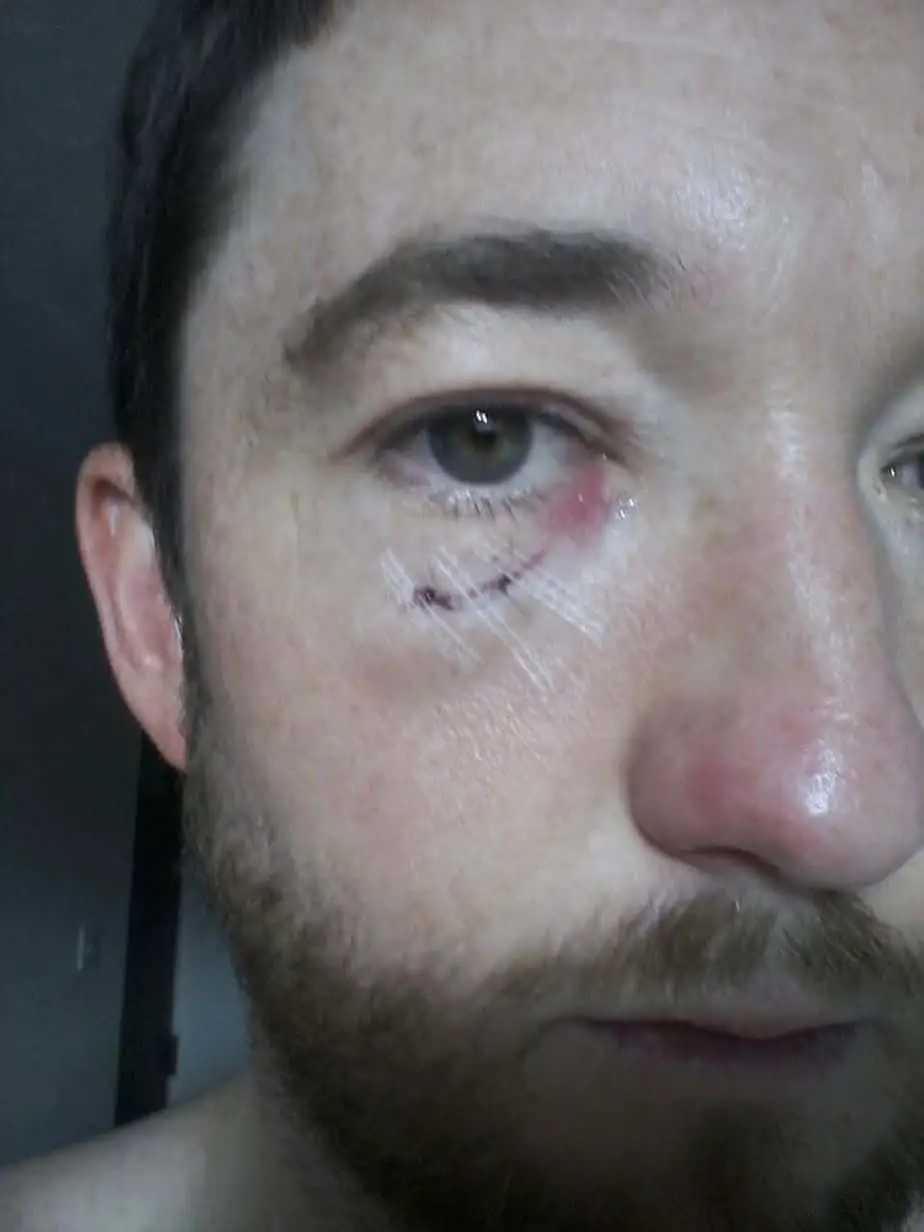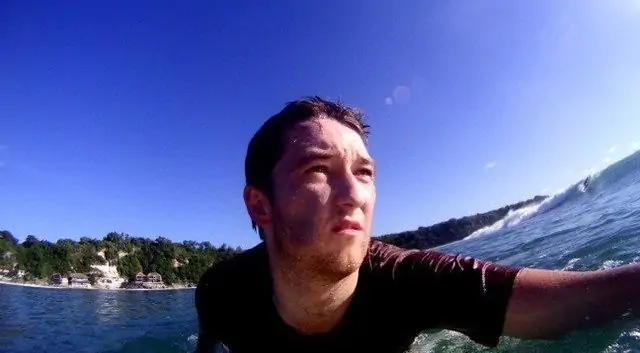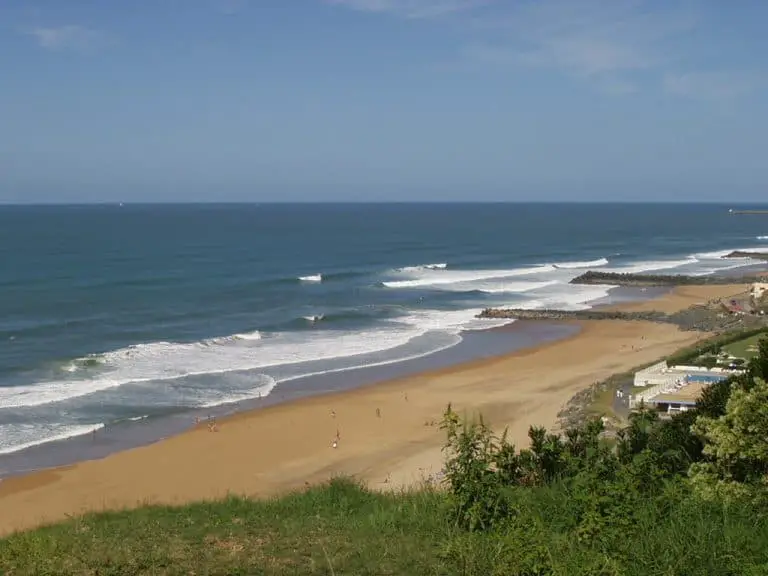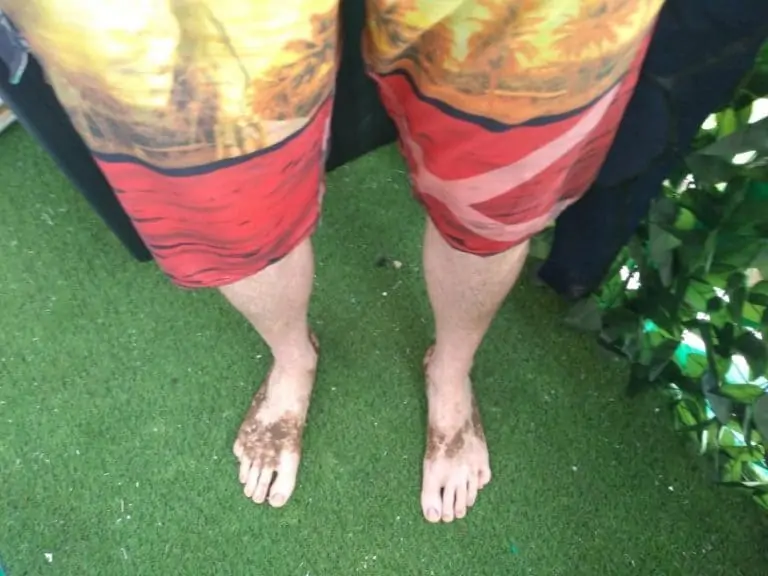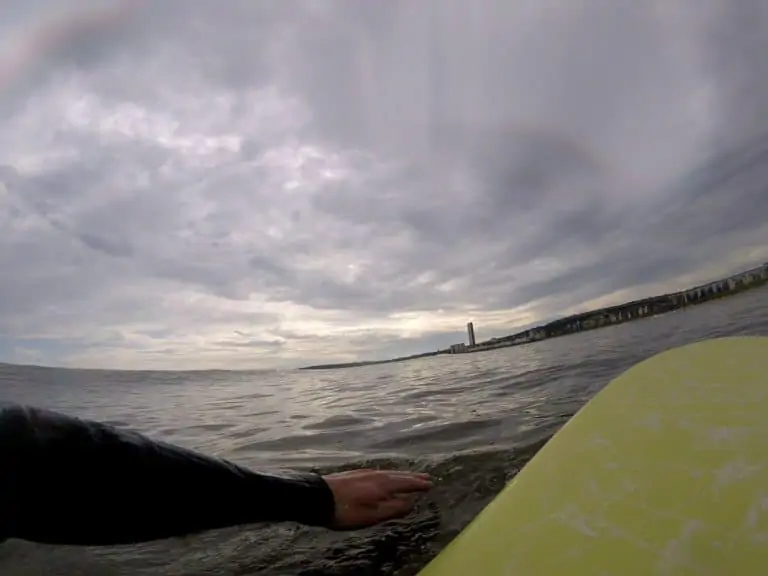6 Key Dangers of Surfing for Beginners (and How to Avoid them)
Surfing is a great and fun activity. It will give you many hours of enjoyment if you do it right. However, there are key dangers that you need to be aware of when you learn to surf into any spot.

To help you, I have tips and solutions to identify these and to avoid having these issues. Below are my detailed points to help you have maximum fun and safety out in the surf!
With that said, let’s get into the 6 key dangers of surfing for beginners and how to avoid them.
Tides
Tides when you are out in the surf are the first key danger to look at. The moving tides are calm currents that you may not be aware of if you are new to that spot. Tides move on 6 hour cycles from low to high, 6 hours to go back down again.
Changes in the tide can have dramatic changes in a given surf spot. This may include shallow reefs, rips and currents as well as dumping shorebreak waves. All of which will be explained in more detail in other sections of this article.
The key point here is to be aware of the different stages of the tide at your chosen spot. You should know when high and low tide is, the safest and best time for you to see it.
My recommendation is to surf on an incoming tide where possible. This has the fewest amount of reps and currents that will take you out to see.
You can see more in my detailed article on the best time to surf at a given spot here!
Rips
To add to the points above about tides, you also need to be aware of rips and rip currents. Again, you can’t really see these unless you know exactly what you are looking for.
Some beaches have warning signs on the beach but not everywhere. One tell-tale sign for a rip current is that you can see small ripples on the surface going in one direction adjacent to the shoreline.
The best advice to reduce your chances of encountering rip currents is to surf sand-bottom beach breaks away from rivermouths on an incoming tide.
With that and surfing with others, plus a little common sense, you should be fine.
Winds
Windsor also a big issue for surfers especially if the wind is blowing out to see. These winds can take you far from shore and surfers are prone to getting caught by wind because they sit upright on their boards.
You may not realise it but just sitting up on the surface of the water means you can get blown around by the wind very easily. If the wind blows out to sea then you really need to keep an eye on your location. Make sure you’re always within striking distance of the shore.
Going with other surfers is extremely helpful as you can gauge yourself by them. If there are not many people around try to triangulate yourself with two different items on the beach, one in front of you and went out to the side.
You should always have a point of reference that will help you to remain in the right place and paddle back to where you need to be if you are getting caught out by the wind.
The wing can also be hazardous for surface because when you fall off your board as you always will, it can pick up the board and make it into a projectile.
It might not sound like much but if your 9 foot-long surfboard hits you after flying to the air it can really do some damage, so be careful with this especially in the early days.
The main tip here is to only learn to surf on lighter with days and to go to more sheltered spot if the wind is getting very strong.
Big Waves (5 Ways)
I know surfing big waves is a known danger to everyone, whether they’ve tried surfing or not.
However, you can get caught out in waves that don’t seem that big from the shore but are actually a lot bigger than you think, through the following ways:
- Misjudging wave size from shore
- Surfing a shorebreak (without realising it)
- Surfing a reefbreak
- Bigger waves with different tide
- Rapidly growing swell during your surf
Misjudging Conditions
This is the most likely kind of danger you would face when learning to surf, simply because you misjudged the conditions.
To prevent this, check the spot for a good while from land before paddling out, looking closely at the surfers who are riding waves (Note: if there aren’t any, that’s a red flag in itself – choose a different spot!)
Surfing a Shorebreak
If you are surfing at a spot that has a shorebreak, where the waves break close to short high tide, they’re not only is this dangerous for being shallow water but also you can have much bigger waves much closer to short than you might think.
To avoid this issue, have a look at the spot in a surf guide, find it online or in a book. You will then see if it mentions a short break at high tide, for instance.
Surfing a Reefbreak
Other hazards like the one above that could cause big waves to break in shallow water are reefs or rocks. Again, looking at websites or safeguards will tell you if this is true for your spot.
The last reason why you might get caught out in big ways is if the swell is rising quickly and you don’t realise it, which does happen sometimes.
Bigger Waves With a Different Tide
Sunset spots come alive with a higher tide or lowetide, but can look dormant on the wrong side for that spot.
This means that you can paddle out at a spot that looks playful and fun 1-minute but within an hour it can turn into to an advanced spot with waves that have doubled in size, simply because of the tide.
The solution here again comes from checking a good safe guide that tells you about the different breaks at the different stages of the tide.
To give you an example, where I grew up surfing, where the tides are some of the biggest in the world, one small local beach has 8 different waves all breaking on different stages of the tide!
This same spot can have overhead waves on a low tide and be almost flat at high, so it pays to always remain aware of the tides and how they impact your chosen spot.
Rapidly Growing Swell During Your Surf
The waves might gradually build and you find yourself struggling to get back into shore.The answer here is to have a look at the surf conditions online before paddling out.
If it looks like there is going to be a big increase in swell during the time you plan to surf, don’t take the risk and go somewhere that looks smaller – it will likely get bigger while you’re out there anyway!
Crowds
Out of all the points in this list, crowds are probably the most likely problem that surfers will face. Surfing in a group of crowd might seem like a fun activity. ALthough things can get out of hand if you are too tightly packed in.
With this in mind, try to paddle out in an area with other learners but not with so many that you feel uncomfortable. When people are learning to surf, lots of people are falling off. A lot of surfboards will be flying all over the place.
The vast majority of the time this is fun, but it only takes one collision to make it a lot less fun! To beat this, you can just walk a bit further down the beach to have more space, or go a bit earlier or a bit later than the majority of the other learners.
The other type of crowds you need to be aware of is that of the advanced surfers, who do not tolerate learners.
If you find yourself at an advanced spot, the way it works is that the other surfers expect you to know the etiquette and rules, while also being a competent surfer.
If you are not, then you will struggle to get out of the way and you may find that you’ll get run over by others who are riding waves.
To avoid this, this is simply comes down to common sense and observing the other. To avoid this, this simply comes down to common sense and observing the other surfers.
If they look like they are a much higher level than you, then paddle out somewhere else because you will not be welcome at this point in your learn-to-surf journey!
Surfboards
To continue on from the theme above about crowds, surfboards are also another danger in themselves.
When people stand up on a surfboard that is traveling quite fast, this can be like a projectile. People fall off when surfing all the time, leaving their board at the mercy of the wave behind them and flying out in any direction.
If you remember that most surfboard leashes are the same length as a board, and most surfboards are between 6 and 8 ft long, then a fallen surfer’s board has a range of 12 to 16 feet away from where the surfer fell.
This means that you do not want to be in close range to anyone who falls wherever possible to avoid any hits from rogue surfboards.
Fins
As part of a surfboard, fins can also be very dangerous, both on your board and others.
If you think of a surfboard fin being a bit like a knife that cuts to the water, if that hits you with a fully grown adult riding a heavy surfboard, there’s a lot of weight behind a surfboard fin!
Again, avoiding issues like this come back to choosing your spot properly and knowing your level, as well as not surfing in a super crowded area. Fins on your own surfboard can also be a problem when you fall.
When learning to surf, you will find that you fall many different ways and you can’t really control it. This is both quite painful and frustrating, but it does get easier.
Nevertheless, you may well fall awkwardly on your board that has flipped over while being pushed around by the whitewater. This can give you a severe bruise or wind you completely, see you need to be aware of that.
In fact, the bigger and more powerful the wave the more likely it is to flip your board. For you to land awkwardly on it as powerful waves can put it into a vicious cycle of movement.
Surfboard Noses and Tails
Another part of your surfboard that you need to be aware of is the nose (or sometimes the tail). This is mainly a problem for more advanced surfboards, which have a pointy nose.
This kind of nose has higher pressure on impact and can do more damage. Small things like when you resurface after a duck dive, you might find your own bored flying back at you.
In fact, this happened to me, as you can see in the photos below. I came up in shallow water and the tail of my wife’s longboard basically ‘punched’ me in the eye. I didn’t even see it, it was that quick.
[WARNING: IF SQUEAMISH, CLOSE AND SCROLL DOWN TWICE!]
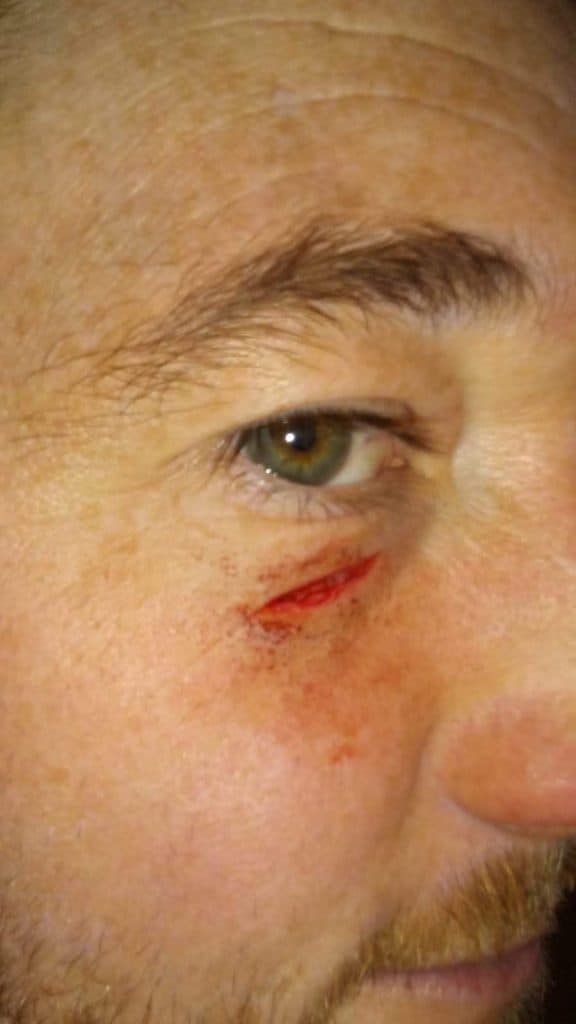
Luckily with no lasting eye damage. I had to go to hospital, have 8 stitches and couldn’t surf for a few weeks.
To avoid this, get a leash that is the right size and don’t surf with a heavy longboard in shallow water (which was what caused my accident). You might also like to get a surf helmet to prevent any damage on the back of your head, too.
Hopefully you can see that all of the above means another good reason to buy a learner surfboard to start. Definitely check out my guide on best beginner surfboard brands if you want to know more on this right now!
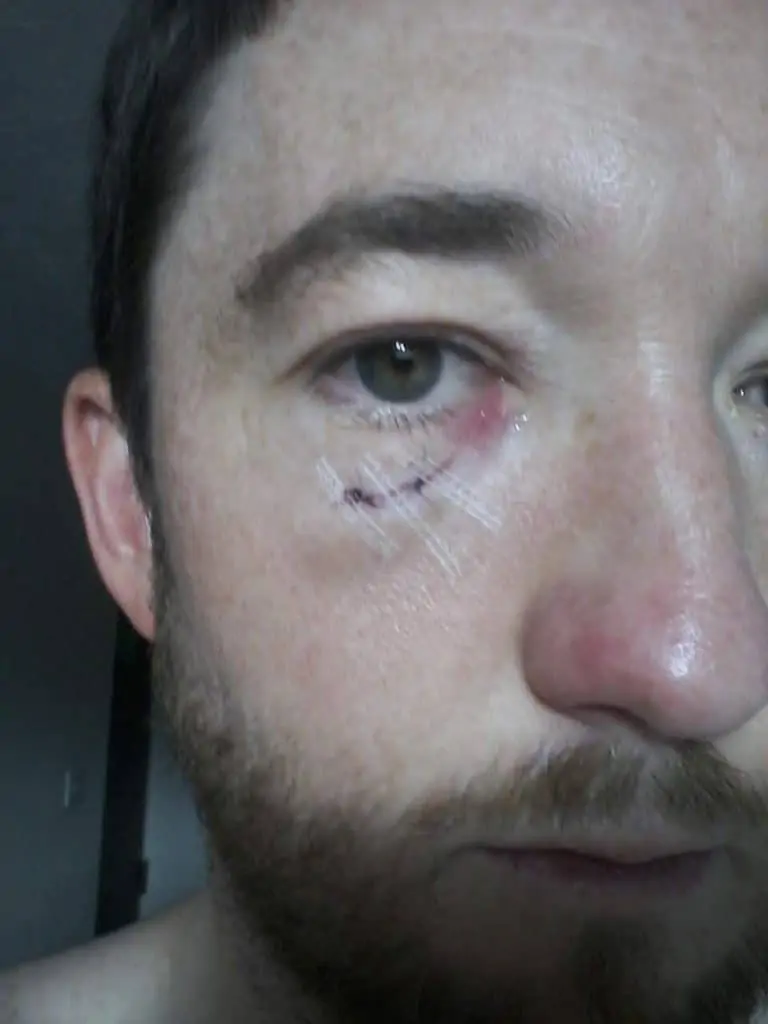
Locals
You might have heard about locals in surfing or localism, but they are definitely out there and they are definitely real! In essence, locals are surfers who serve the same break and surf it regularly.
Local surfers come in all different shapes and sizes, and have different attitudes. Some are quite happy with new surfers as long as they don’t break the rules. While others simply do not tolerate anyone they don’t recognize!
In Hawaii, there are often problems with tourists getting in the way of locals. The Hawaiians say that they are keeping other surfers safe and need to keep the order out in the surf. It can be a lawless and dangerous area.
Localism is something that is written about in surf guides and on websites. So you can pick up on this by just reading up on your spot online. Just remember that more secluded spots have more protective locals.
If you go to a new spot, be courteous don’t get in the way and don’t take loads of photos! If you feel the vibe is a bit aggressive, don’t go back to that spot just leave it to locals.
Leashes
Surfboard leashes are designed to protect you and save you paddling back in after your board every time you fall. However, leashes can also be a hazard at the same time.
To give an example, in the early days of surfboard leashes, the leashes was so elasticated that a lost board would fly back at the user making the surfboard more dangerous with a leash than without!
Fortunately, leashes have come a long way but there are still a few different things you need to think about. The main point being that some leashes can become weak with overuse.
If you use a leash for more than a few years, consider changing it after 2 to 3 years. This is because the leash weekends overtime and the velcro does as well.
The problem with a leash is that there are not many visible signs of wear. It’s best changed them periodically based on your use.
I have had many leashes break when I’ve been out in the surf or making for a long swim in. Even a near drowning experience in my case but that was an extreme!
Novice surfers often gets and caught in their leash and try to put it on. This is a problem because any sand in the velcro will make it much less sticky.
For this reason, you should never let your least drag on the sand. It will collect sand and also wear out the velcro more quickly.
Another problem is that people don’t put on their leash type the enough length. With the first pull from a wave after falling, the leash can just slip off the ankle.
To help you here, I recommend dipping your leash in water before putting it on. So it stretches and then put it on as tight as you can around your leg just above the ankle.
I also like to put my leash tucked in under the bottom of my wetsuit leg to stop it moving around too much. A less common problem with Lisa’s is that of actually getting it cost around your neck, which can happen.
This is rare and should not be an issue. Put your leash on your rear foot when standing, and do not let your leash get kinked or coiled.
To avoid your leash getting kinked or coiled, just leave it hanging loosely when you are out of the surf. Do not try to tie your leash neatly around your surfboard. It looks nice and more convenient, but this is precisely what cause leash problems, making it more dangerous to use.
As a final point, many learner surfers trip over their leash while walking down to the water’s edge.
To prevent this from happening to you, simply carry your leash in your hand at all times by wrapping it around your board once or more depending on its length. This will stop you from tripping over it and also keep it from getting full of sand, as mentioned above.
Related Questions
Is it dangerous to surf alone? Yes for beginners, but less so for advanced surfers. It’s always best to go with others, and you should not go surfing alone if you are just starting. Paddling out at a spot with a few others and that will be a lot safer than going alone.
The main dangers of surfing alone are getting caught in a rip current, falling off and hitting your head, or losing your board and not being able to swim back in to shore.
There are more hazards like this but you get the picture. Simply paddling out at a spot with one or two others will mean much less chance of you having any of these problems.
Can surfing kill you? Yes from things like collisions with other surfers, hitting the reef after falling off a powerful wave or drowning from being held down from a big wave. The main dangers for most surfers are collisions with others, although shark attacks also happen.
Surfers die every year from all of the points above but that is an extreme. There are millions of happy surfers who are out in the waves all the time without any issues.
For this reason, try to surf at spots with lighter crowds. Also look at getting yourself a good quality suit helmet.
